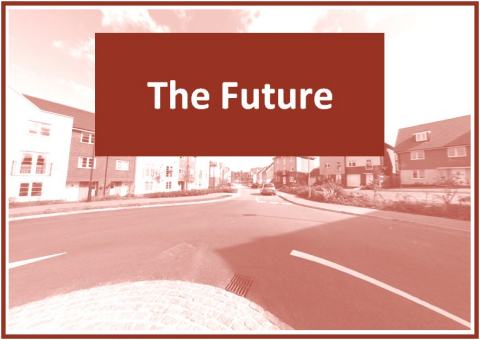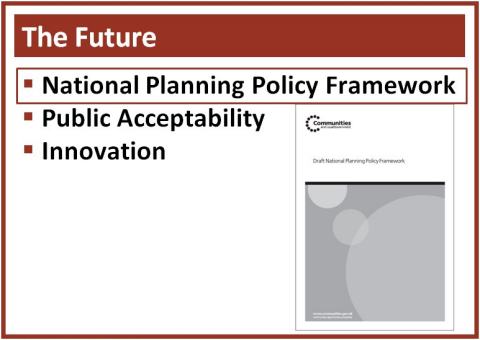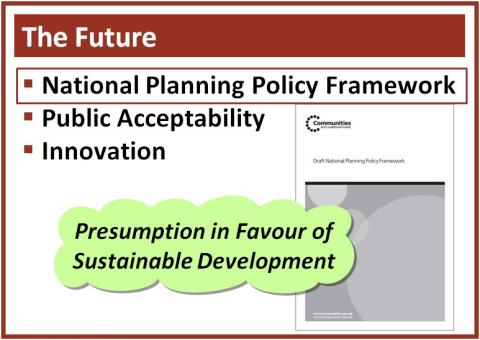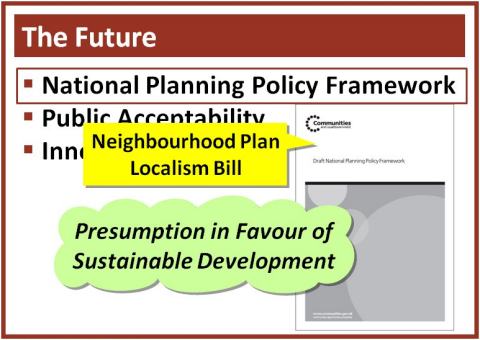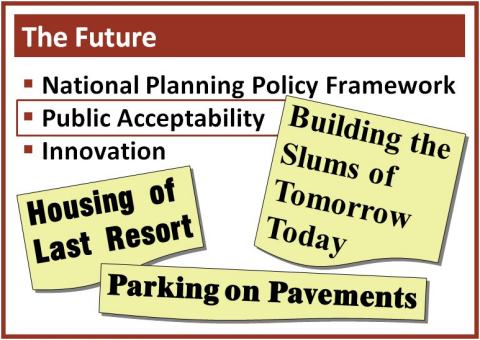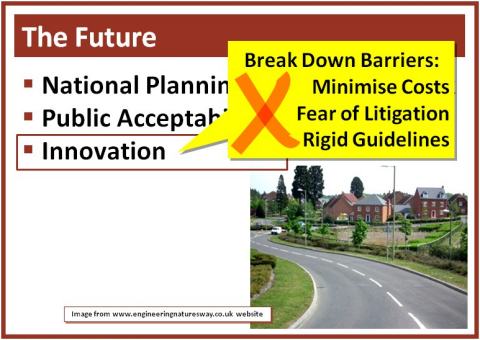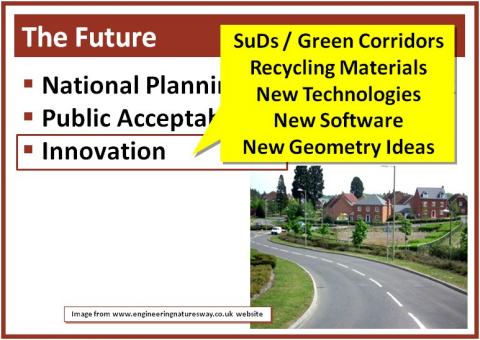 |
Better below ground storage crate systems to attenuate storm flows, and tree root barrier systems to enable street trees and buried services to share the same footway space mean better designed sustainable drainage systems (SuDS) and green corridors
A number of everyday highway items, like kerb units and manhole covers, are now available using recycled plastic and other recycled materials. More concrete and blacktop road construction now also includes a variety of recycled materials
Other new technologies can improve the street scene and user safety
For example LED street lighting, already used in many UK locations, provides directional and low energy lighting
Speed activated traffic lights, common in Continental Europe, and average speed safety cameras (even at low 20 mph speeds) target more efficiently those individuals who speed
Advances in computer software mean we can now create virtual 3D models of our housing estates. At public consultation events these can provide a realistic virtual 3D representation of how a development might look, and maybe quell some local objections or concerns at an early stage
We can also rethink highway geometry practices. For example, why not consider and design footpaths and cycle tracks first, and then fit the carriageways afterwards? |


